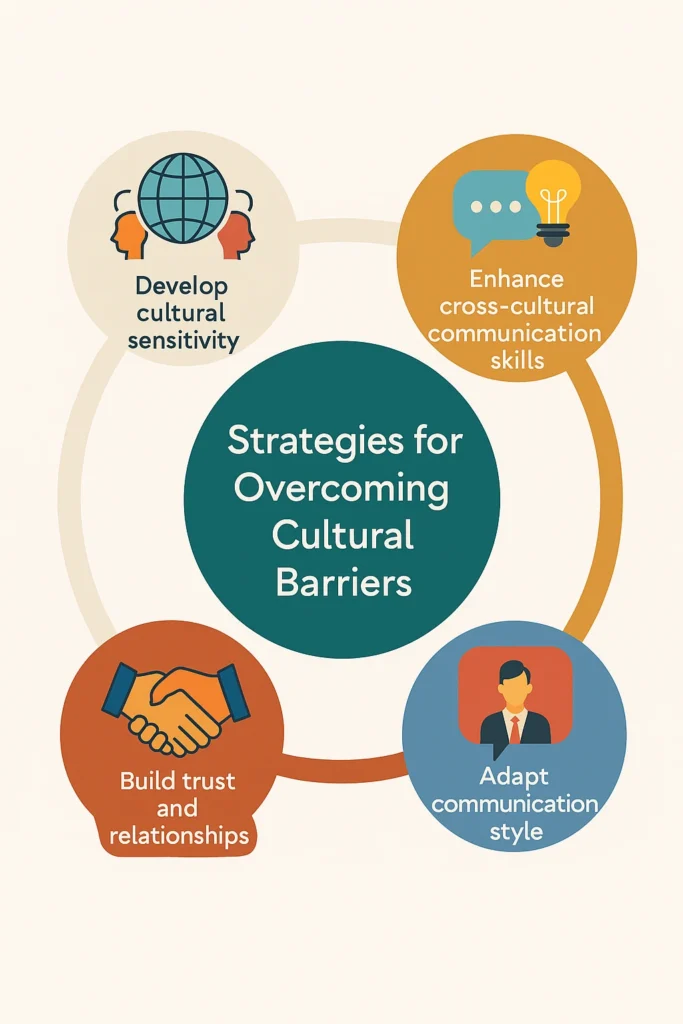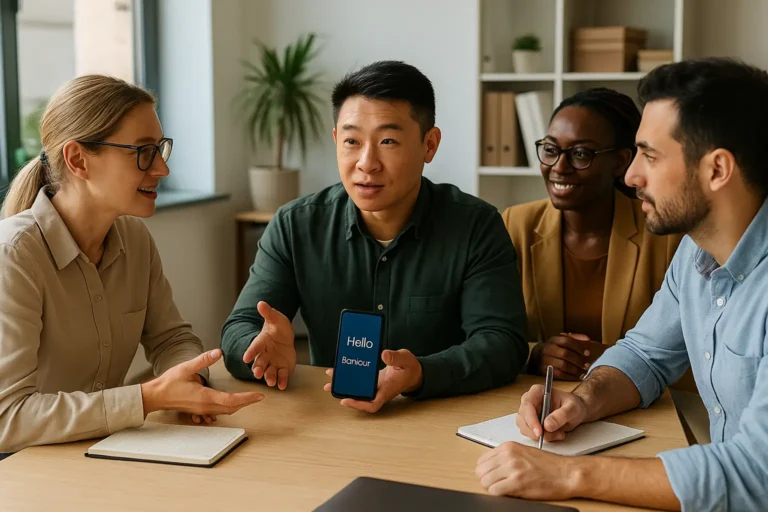Cultural Barriers to Communication
Communication should be easy, right? You say something, the other person understands, and everyone moves forward. But when you add cultural differences to the mix, even the clearest message can get lost. Cultural barriers to communication show up every day—at work, at school, in travel, or even in a simple chat between friends. Why do these barriers happen, and how can you break through them? Let’s find out how culture shapes the way we connect, and learn simple ways to build real understanding across differences.
What Are Cultural Barriers to Communication?
Cultural communication barriers are obstacles that arise when people from different backgrounds struggle to understand each other. These barriers come from differences in language, values, customs, beliefs, and even non-verbal signals. They can make it harder to share ideas, build trust, or solve problems—especially in diverse workplaces or global teams.
Think about two coworkers from different countries. Even if they both speak English, accents, slang, and gestures might create confusion. Or imagine a virtual team where people are used to different levels of formality, feedback, and decision-making. These invisible walls often go unnoticed, but they can cause frustration, missed opportunities, and even conflict.
Why Do Cultural Barriers Matter?
Ignoring cultural barriers doesn’t just make communication harder; it can lead to real-world problems. Businesses lose deals, teams argue, and individuals miss out on friendships or promotions. When people feel misunderstood, morale drops and creativity suffers.
A Harvard Business Review study found that diverse teams outperform others—but only if leaders address cultural challenges proactively. When barriers are left unchecked, they block collaboration and slow progress. But when people learn to spot and address these obstacles, the benefits of diversity shine through: better ideas, broader perspectives, and stronger results.
Key Concepts
Cultural barriers are about more than speaking different languages. Here are some important terms to know:
- Cultural intelligence (CQ): The ability to relate and work well across cultures.
- Intercultural competence: Knowing how to interact with people from different backgrounds.
- Non-verbal cues: Gestures, facial expressions, body language, and eye contact.
- Unconscious bias: Hidden attitudes or stereotypes that affect how we react to others.
- Code-switching: Changing your language or behavior in different settings.
- Microaggressions: Subtle or unintended comments that can cause offense.
- High-context vs. low-context: Some cultures rely on unspoken rules and shared history (high-context), while others prefer clear, direct messages (low-context).
- Power distance: How much people accept unequal power in organizations.
- Collectivism vs. individualism: Whether a culture values the group’s needs over the individual’s, or vice versa.
Types of Cultural Barriers to Communication

Language Differences and Dialects
Language is the most obvious barrier, but even two people who speak the same language can run into trouble. Dialects, slang, and regional accents all play a part. For example, the word “pants” means underwear in British English but trousers in American English. This simple confusion could lead to a funny—or embarrassing—moment at work!
Some people may not feel confident speaking in a second language. They might avoid meetings, emails, or social events. That means fewer voices are heard, and teams lose valuable ideas.
Non-Verbal Communication Differences
Most of our communication isn’t about words at all. Body language, gestures, tone of voice, and facial expressions can mean different things in different cultures. A thumbs-up is a positive sign in the US but can be offensive in some Middle Eastern countries. Eye contact is seen as respectful in some places but rude or aggressive in others.
Cultural Norms, Values, and Beliefs
What’s polite in one culture might be rude in another. Some workplaces value punctuality and direct feedback; others focus on relationships and harmony. Attitudes toward authority, time, and confrontation differ, shaping everything from how meetings are run to who speaks up.
For example, in some Asian cultures, disagreeing with a manager in public may be unthinkable. In Scandinavian countries, junior staff might challenge the CEO openly. These differences can lead to misunderstandings, frustration, or people feeling left out.
Stereotypes, Bias, and Ethnocentrism
We all have hidden beliefs about other groups—often without realizing it. Stereotypes are oversimplified ideas that affect how we see people. Ethnocentrism is the tendency to think our own way is “normal” or “best.” These attitudes can lead to exclusion, poor teamwork, or even discrimination.
Microaggressions—small, sometimes unintentional slights—add up over time, making colleagues feel unwelcome. Becoming aware of these habits is the first step to change.
High-Context and Low-Context Communication
Cultures differ in how much they “read between the lines.” High-context cultures (like Japan, China, or Saudi Arabia) rely on shared understanding, non-verbal signals, and unspoken rules. Low-context cultures (like Germany, the US, or Australia) value clear, direct messages. When people from both styles work together, miscommunication is almost guaranteed unless someone bridges the gap.
Power Distance and Hierarchies
How do you address the boss? Is it OK to question a manager’s decision? In some cultures, authority is rarely challenged and titles matter. In others, teamwork is informal, and everyone’s opinion counts. This impacts meetings, email etiquette, and who makes the final call.
Collectivism vs. Individualism
In collectivist cultures (like much of Asia and Latin America), the group’s needs come first. In individualist cultures (such as the US and UK), people focus on personal achievement. These worldviews affect decision-making, feedback, and even how success is defined.
How Do Cultural Barriers Impact Communication?
Cultural barriers to communication have ripple effects across organizations and personal relationships:
- Lost opportunities: Deals can collapse over simple misunderstandings.
- Team friction: Minor issues can snowball into bigger conflicts.
- Low morale: People who feel ignored or misunderstood won’t contribute fully.
- Missed innovation: Diverse perspectives drive creativity—if everyone feels safe to share.
- Poor customer service: Businesses lose clients if they can’t connect across cultures.
Real-World Examples of Cultural Barriers
- A Japanese engineer avoids giving negative feedback to an American manager, causing a project delay.
- A US sales rep’s direct style offends a client in the Middle East, losing a contract.
- An Indian employee hesitates to speak up in a UK team meeting, worried about showing disrespect.
- A multicultural healthcare team struggles with patient instructions because each member assumes different norms about privacy or family involvement.
These stories are common—but they’re also preventable.
Strategies to Overcome Cultural Barriers

Build Cultural Intelligence
Cultural intelligence (CQ) is about knowing how to adapt when working with people from different backgrounds. Take time to learn about other cultures—read, watch, ask, and listen. There are even online assessments and training to help teams boost their CQ.
Practice Active Listening
Listen closely to both words and tone. Don’t assume you understand—ask for clarification. Summarize what you’ve heard, and check if you got it right. This small habit builds trust and reduces mistakes.
Use Simple, Clear Language
Avoid idioms, slang, and jargon. Break complex ideas into simple steps. Use visuals (charts, icons, images) to help explain when words might fail. This makes your message more accessible for everyone, including non-native speakers.
Address Bias and Stereotypes
Be honest about your own assumptions. Invite feedback and correct mistakes openly. Organizations should offer training in unconscious bias, microaggressions, and respectful communication.
Adapt Your Communication Style
If you’re from a direct culture, remember that indirectness isn’t avoidance—it may be a sign of respect. If you’re used to reading between the lines, don’t expect everyone to get your hints. Flexibility is key.
Foster Inclusion and Psychological Safety
Make it safe for everyone to contribute. Rotate meeting roles, encourage questions, and celebrate diverse holidays or traditions. When people feel valued, teams thrive.
Use Technology Wisely
Translation tools, captioning in video calls, and learning platforms can support cross-cultural teams. But always double-check for tone and accuracy. Sometimes, a quick call works better than endless emails.
Encourage Self-Reflection and Code-Switching Awareness
Invite team members to reflect on their communication style and how it shifts in different contexts (code-switching). Support those who adapt their language or behavior as they navigate multiple cultures.
Provide Practical Tools and Training
Offer cross-cultural workshops, mentoring programs, and regular feedback sessions. Leadership should model curiosity and humility, asking questions and inviting diverse viewpoints.
Comparing Communication Styles
| Aspect | High-Context Culture | Low-Context Culture |
|---|---|---|
| Feedback Style | Indirect, nuanced | Direct, explicit |
| Decision-Making | Group consensus | Individual authority |
| Body Language | Important, carries meaning | Less critical, words matter more |
| Attitude to Time | Flexible, relationship-focused | Strict, punctuality matters |
| Role of Hierarchy | Respected, rarely challenged | Flat, open discussion |
Conclusion
Cultural barriers to communication are real, but they’re not permanent. With curiosity, self-awareness, and a few practical tools, anyone can bridge the gap. Whether you’re working with a global team, serving diverse customers, or making new friends, every effort to understand and adapt makes a difference.






